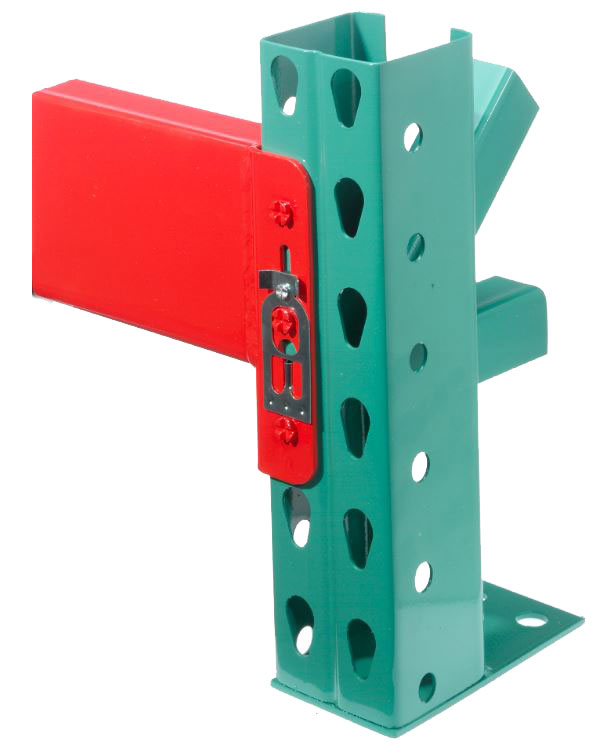
Many rack manufacturers of both structural and roll-formed racks make rack components that can be successfully connected to a structure or component of a rack that has been manufactured by a different company. This bulletin will focus on the mixing of pallet rack beams from one manufacturer being mixed with frames from a different manufacturer. Beams and frames should always first be checked for fit before even considering the mixing of components. While these parts can be connected and mixed there are certain risks that suppliers, manufacturers and users should be made aware:
1.) When parts from different manufacturers are mixed it will likely void any type of warranty from either party. (Since this technical bulletin addresses engineering issues and not legal issues no further comment will be offered here except…Beware.)
2.) A beam sample may be able to be bolted to a column sample on a desk but when a full scale rack is assembled there could be unanticipated fit problems that prevent the rack from being assembled in a square and plumb manner. Rack growth or non-straight rows may be the result.
3.) Difficult fit of components can also result in longer and more expensive installation of the storage rack.
4.) Manufacturers have conducted tests of their beam-to-column connections. When a different beam or frame is used that have not been tested together the properties of the connections could be affected which would could alter the actual capacity of the storage racks.
5.) If different beams are used in the same bay, there could be fit problems that arise from slightly different manufactured lengths of the beams or from connector “reach” distances i.e. distances between centerlines of punching. Sometimes beams will fit but there will be an unanticipated gap between the connector and the column.
6.) One manufacturer’s beam lock mechanism may not work with a different manufacturer’s frame.
7.) Beam connectors that are made with pins may have differences that are very difficult to notice. For example, the neck length of the pin may be too short for the wall thickness of the supplied frame, making the proper seating of the beam difficult or impossible.
8.) The ordering of replacement parts can become very confusing in the future.
While it may be tempting to take advantage of a cost savings, the mixing of beams and columns carries a risk that may more than erase the expected savings. If parts from company A and company B are to be used, it is recommended that they be used on different independent structures rather than mixed together. This will also make the correct ordering of replacement parts that may be needed more obvious.